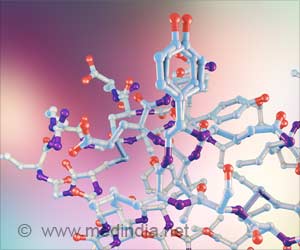DelSite Biotechnologies, Inc., and Carrington Laboratories, Inc. said the company's novel powder-based vaccine delivery technology may solve most of the key obstacles that delay influenza
IRVING, Texas, Officials of DelSite Biotechnologies, Inc., a wholly-owned subsidiary of Carrington Laboratories, Inc. said the company's novel powder-based vaccine delivery technology may solve most of the key obstacles that delay influenza pandemic preparedness which were discussed by experts at the worldwide "Options for the Control of Influenza VI Conference" held in Toronto, Canada last week.
Long-standing problems associated with the production, storage and distribution of vaccines to meet the challenges posed by a pandemic outbreak of an influenza virus, such as the bird flu (H5N1), were highlighted in a series of presentations at the conference. The Conference was supported by the U.S. Center for Disease Control (CDC) and the International Society for Influenza and other Respiratory Virus Diseases (ISIRV).More than 1,500 influenza experts from around the world attended the conference, including government policy makers, pharmaceutical executives, researchers, physicians, epidemiologists and other professionals focused on the control of influenza.
The following key needs were cited:
1. The ability to have an adequate stockpile of vaccines. Current vaccines must be refrigerated during storage and distribution. Despite its cost and inconvenience, cold storage does not significantly extend the short shelf life of influenza antigens and vaccines. DelSite's GelVac(TM) powder vaccine system has been shown to stabilize and preserve an influenza antigen at room temperature for more than two (2) years without loss of potency.
2. The capability to implement rapid distribution in the event of a full pandemic. According to one flu expert, if the next influenza pandemic is equivalent to the flu pandemic that occurred in 1957 (H2N2 virus), timing of actions by the U.S. government would be critical. In 1957, under transportation systems available at the time, it took only six months for the virus to travel from China to the U.S. With today's faster transportation systems allowing 1.2 million people to enter the U.S. each day, it is anticipated the virus would spread much faster. For containment of disease, a massive and expeditious vaccination program, along with other measures, would have to be initiated as quickly as possible.
According to the same expert, about 10 million doses per week for 25 weeks would have to be delivered in order to protect the U.S. population during a full pandemic. Current cold chain distribution systems may not be able to respond, but a nasal powder vaccine that can be shipped at room temperature and be self-administered may be a solution. DelSite's nasal powder technology meets these criteria and could add additional value by providing immunological protection to recipients at the site where viruses normally enter the body: the respiratory tract.
Advertisement
4. A way to reduce the number of months required to produce necessary antigen, if different from stockpile. Currently, chicken eggs are used in the U.S. for production of vaccine antigens. This egg-based manufacturing process requires a minimum of six months. The newest technology available uses a mammalian cell line to produce antigens. This cell-based technology is more efficient, faster, and eliminates allergic problems caused by egg proteins.
Advertisement
DelSite's GelVac(TM) platform is based on the GelSite(R) polymer, a negatively-charged linear polymer with a molecular weight greater than 450,000 which is derived from a natural source and is classified as a GRAS (generally regarded as safe) by the FDA.
GelSite(R) is produced in kilogram quantities under FDA good manufacturing practices for human drugs (cGMP) in an ISO-certified facility. Each kilogram of the GelSite(R) polymer can be used to manufacture approximately 5 to 8 million vaccine doses. Plant material used in the production of GelSite(R) polymer is recognized as certified organic by the U.S. Department of Agriculture, European Union and government of Costa Rica.
After the Influenza Conference concluded, Dr. Yawei Ni, chief scientific officer of DelSite, stated, "Our GelVac(TM) powder vaccine delivery platform was the only powder system at the conference, and I believe it can be used to solve or alleviate basic technology problems that would be created by a worldwide pandemic. We have completed the Phase I safety study for the powder system and will file an IND with the FDA for a Phase I clinical study using a H5N1 antigen later this year."
Source: PR Newswire
Source-IANS
LIN/M











